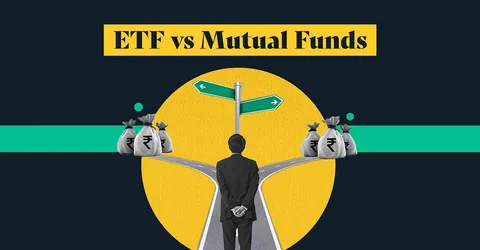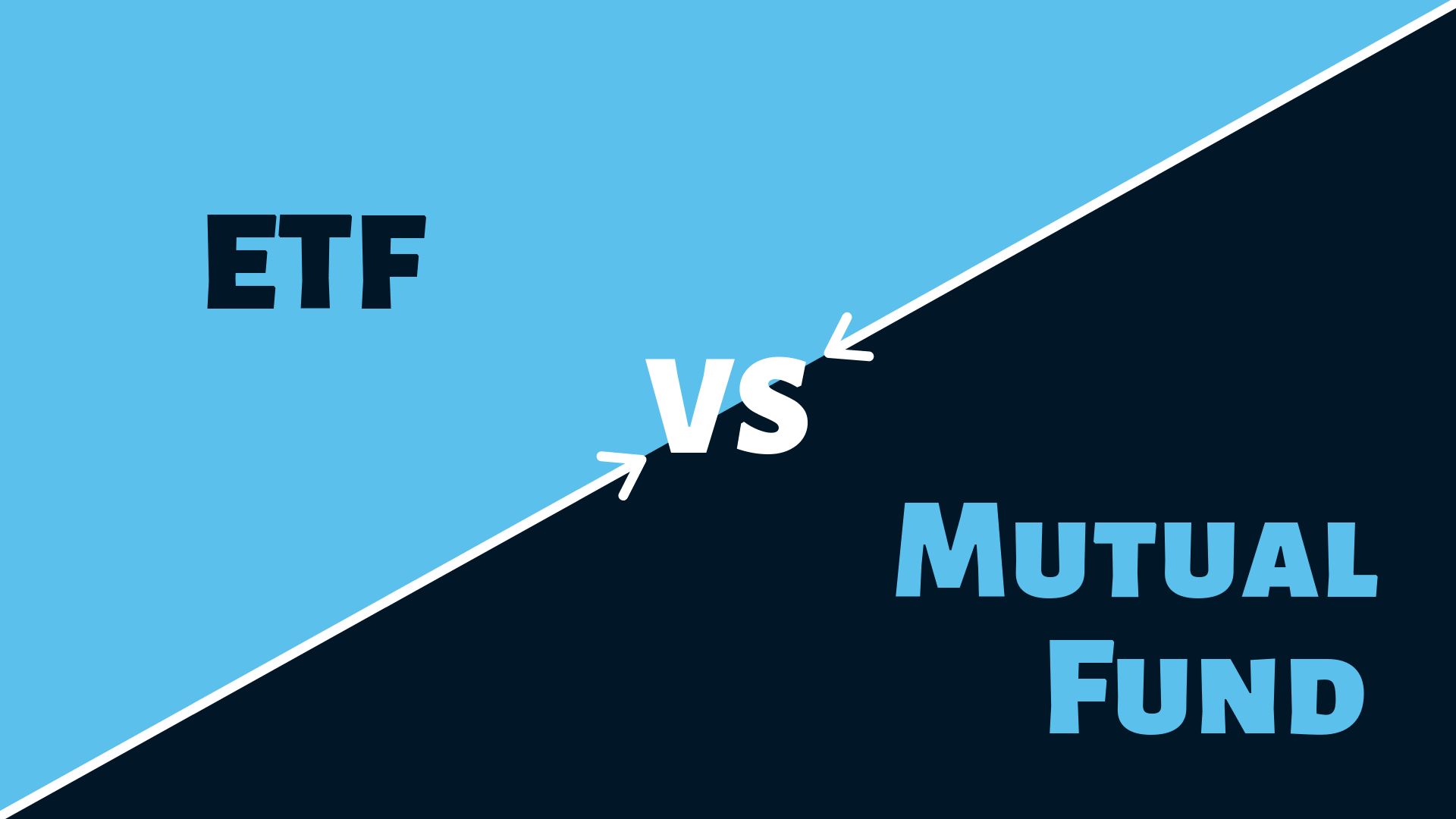“The individual investor should act consistently as an investor and not as a speculator.” – Benjamin Graham
What’s The Difference Between An ETF And A Mutual Fund?: When stepping into the world of investing, understanding the distinction between Exchange-Traded Funds (ETFs) and Mutual Funds is crucial. Both offer diversified exposure to markets, yet differ significantly in cost, flexibility, and management style. With more than ₹50 trillion in mutual fund assets in India as of 2024 and ETFs growing rapidly as a passive investment choice, knowing what suits your investment strategy can make a substantial difference.
Let’s explore how ETFs and mutual funds differ, and how to choose the one that aligns with your financial goals.
Key Differences Between ETFs And Mutual Funds
Both ETFs and mutual funds pool money from multiple investors to invest in a basket of assets. However, their structure, trading mechanism, and cost vary considerably.

1. Trading Flexibility And Liquidity
- ETFs are traded on stock exchanges just like individual stocks. You can buy or sell them any time during market hours.
- Mutual Funds are purchased directly from the fund house and are priced once daily after the market closes.
This makes ETFs better suited for active traders or those seeking real-time pricing, while mutual funds cater to long-term investors seeking simplicity.
🔗 HDFC SKY explains ETF trading flexibility
2. Expense Ratio And Cost
- ETFs generally have lower expense ratios (average 0.5% or lower) compared to mutual funds (ranging between 1%–2.5% for active funds).
- According to 5paisa, this cost advantage makes ETFs a better choice for cost-conscious and long-term passive investors.
Mutual funds often include hidden fees like entry/exit loads, which are absent in ETFs.
3. Management Style
- Mutual funds are typically actively managed, where a fund manager makes buying and selling decisions.
- ETFs, especially index ETFs, are usually passively managed, tracking a benchmark index like NIFTY 50 or SENSEX.
This results in mutual funds trying to beat the market, while ETFs aim to mirror market performance.
🔗 Learn more from Groww’s ETF guide
Transparency And Portfolio Disclosure
Transparency is a big win for ETFs. As noted by Stoxbox, most ETFs disclose their holdings daily, giving investors more visibility and control. On the other hand, mutual funds generally disclose their portfolio holdings monthly or quarterly, which can delay decision-making.
Final Verdict: Which One Is Right For You?
| Criteria | ETF | Mutual Fund |
| Trading | Intraday (stock exchange) | End of day NAV |
| Cost | Lower (0.2%–0.5%) | Higher (1%–2.5%) |
| Management | Passive | Active |
| Transparency | High | Moderate |
| Liquidity | High | Lower |
| Ideal For | DIY investors | Hands-off investors |
For new investors, ETFs are ideal for low-cost, index-based investing, while mutual funds are better for those looking for professional fund management with a long-term horizon.
🔗 Also read: Investopedia comparison of ETFs and mutual funds
FAQs
Are ETFs Safer Than Mutual Funds?
Both are relatively safe if diversified, but ETFs offer greater transparency and lower costs.
Can I Invest In ETFs Without A Demat Account?
No. You need a Demat and trading account to buy or sell ETFs.
Are Mutual Funds Good For SIP?
Yes, mutual funds support Systematic Investment Plans (SIPs), making them ideal for disciplined long-term investing.
Which Offers Better Returns: ETF Or Mutual Fund?
Returns depend on fund performance, but actively managed mutual funds may outperform ETFs during certain market cycles.
What Is The Minimum Investment In ETFs?
You can buy even one unit of an ETF, making it accessible. In contrast, mutual funds typically require ₹500 or more.
Do ETFs Pay Dividends?
Yes. Many ETFs pay dividends, which are either distributed or reinvested depending on the ETF type.

